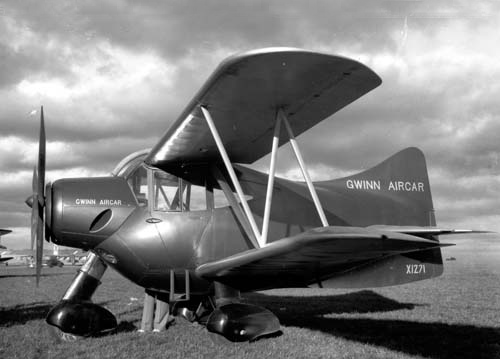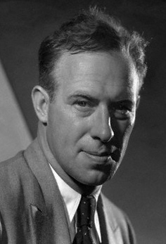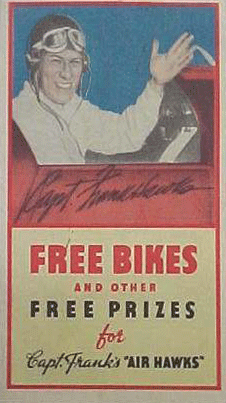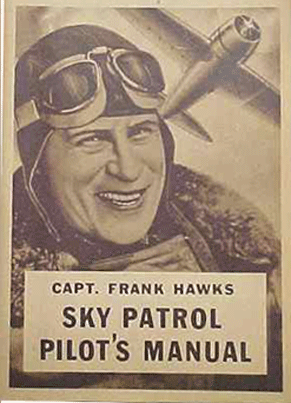Time
Flies At 70
 Sometimes
we read or write or just hear oft-repeated words, and might wonder of
their origin. Sometimes
we read or write or just hear oft-repeated words, and might wonder of
their origin.
Earlier this week we were looking at an
advertisement in these pages from Lufthansa Cargo, a message for tdfLASH
that in 2008 celebrates 15 years of that service to the world of transportation.
Word up, that 2008 marks 70 years since
the phrase “Time Flies” entered the aviation language.
Here is how that happened.
During the late 1920’s and 1930’s
there was in America this wonderful pilot, a captain of the clouds, the
all around aviator named Frank Hawks.
Hawks got famous in a hurry in December
of 1920, taking a 23-year-old Amelia Earhart on her first airplane ride,
lasting ten minutes, at the airfield in Long Beach.
In 1933, handsome Frank set the west to
east transcontinental airspeed record in his Northrop Gamma, flying from
Los Angeles to Floyd Bennett Field, Brooklyn, New York in 13 hours, 26
minutes, and 15 seconds.
 It is said that Frank held as many as 214
point-to-point speed records in the United States and Europe.
It is said that Frank held as many as 214
point-to-point speed records in the United States and Europe.
Hawks set more speed and endurance records
than anybody ever.
Frank even broke several records in Europe
prior to WWII aboard his Northrop Gamma aircraft called Sky Chief.
Sky Chief was owned by Texaco, the oil company,
and after Hawks had finished flying for them, Texaco actually changed
the name of their premium gasoline to Sky Chief in honor (and to trade
off of Hawk’s accomplishments and fame) as mentioned, after Hawks
smashed almost everyone’s speed and endurance records including
many of Charles Lindbergh’s as well.
Later the aircraft that Hawks
flew Buenos Aires/Los Angeles morphed into the Douglas SBD Dauntless dive
bomber of World War II fame.
In 1936 with Howell W. ‘Pete’
Miller who designed the famed early 1930’s Gee Bee superacer, Hawks
dreamed up another aircraft.
Miller worked for Gwinn Aircraft where both
men concurred with the company owner Joseph Gwinn who had a vision to
create an inexpensive airplane that every man “could park in the
driveway,” back during a time when many hoped that some day personal
flying would be for everyone.
From that collaboration, the Gwinn Aircar
was born.
Frank Hawks was famous and respected so
getting somebody to put up the money to build his airplane and sponsor
a national tour (how both military and commercial airplanes were marketed
in those days) was no problem.
The Gruen Watch Company sponsored one of
the two Gwinn Aircars that were built, and as a watch company the name
Time Flies was attached to the new “roadable” airplane.

 Time Flies was touted as “The Model
T Of The Air,” when the first flight was made on October 18, 1936,
four months after construction had begun at Springfield, Mass.
Time Flies was touted as “The Model
T Of The Air,” when the first flight was made on October 18, 1936,
four months after construction had begun at Springfield, Mass.
Frank Hawks took off after breakfast in
Time Flies from Hartford, Conn., on April 13, 1937, piloting 1,100 miles
to Miami, Fla., where he had lunch 4 hours and 55 minutes later.
After compliments to his hosts and the cooks,
Hawks proceeded to fly all the way up to Newark Airport, N.J., in 4 hours
and 21 minutes for a grand dinner reception at The Robert Treat Hotel.
Time Flies continued to set records and make friends for the proposition
of “roadable aviation” until in 1938 when Frank Hawks at age
41 crashed at takeoff from a soggy grass field in upstate New York.
The death of the famed aviator ended the
Gwinn Aircar dream.
But Hawk’s fame and the catchy term
Time Flies thought up by a watch company, continues to resonate some seventy
years later.As example in 1935, Hawks flew a Northrop Gamma 8,090 miles
from Buenos Aires to Los Angeles in three days, logging 40 hours of flying
time while making eight fueling and rest stops along the way.
Taking off on May 3, Hawks broke 10 intercity
speed records on the way to Los Angeles.
This included the 3,430 miles from Cristobal,
Panama, to Los Angeles — which he covered in 17 hours, 50 minutes.
The entire 8,090-mile flight took 39 hours,
52 minutes, a full eight minutes less than his estimate.
A postscript: We were reminded of Time Flies and this story by EB
(Mannie) Berlinrut, our friend and collaborator on a book we created in
1978 and again in 1988 on the history of Newark Airport,.
Mannie served as beat reporter during the
1930’s at EWR for the old Newark Sunday Call newspaper where he
knew people like Amelia and Howard Hughes, Billy Mitchell and Charles
Lindbergh, Laura Ingalls and Wiley Post as every day or occasional visitors
at EWR.
Last time we saw Mannie a couple years back
at age 90, he was still going strong.
Mannie also knew and very much liked Frank
Hawks as he recalled talking to him after that MIA/EWR leg.
“Hawks was a “good one above the clouds and down on the ground,”
Mannie said.
Geoffrey
|



